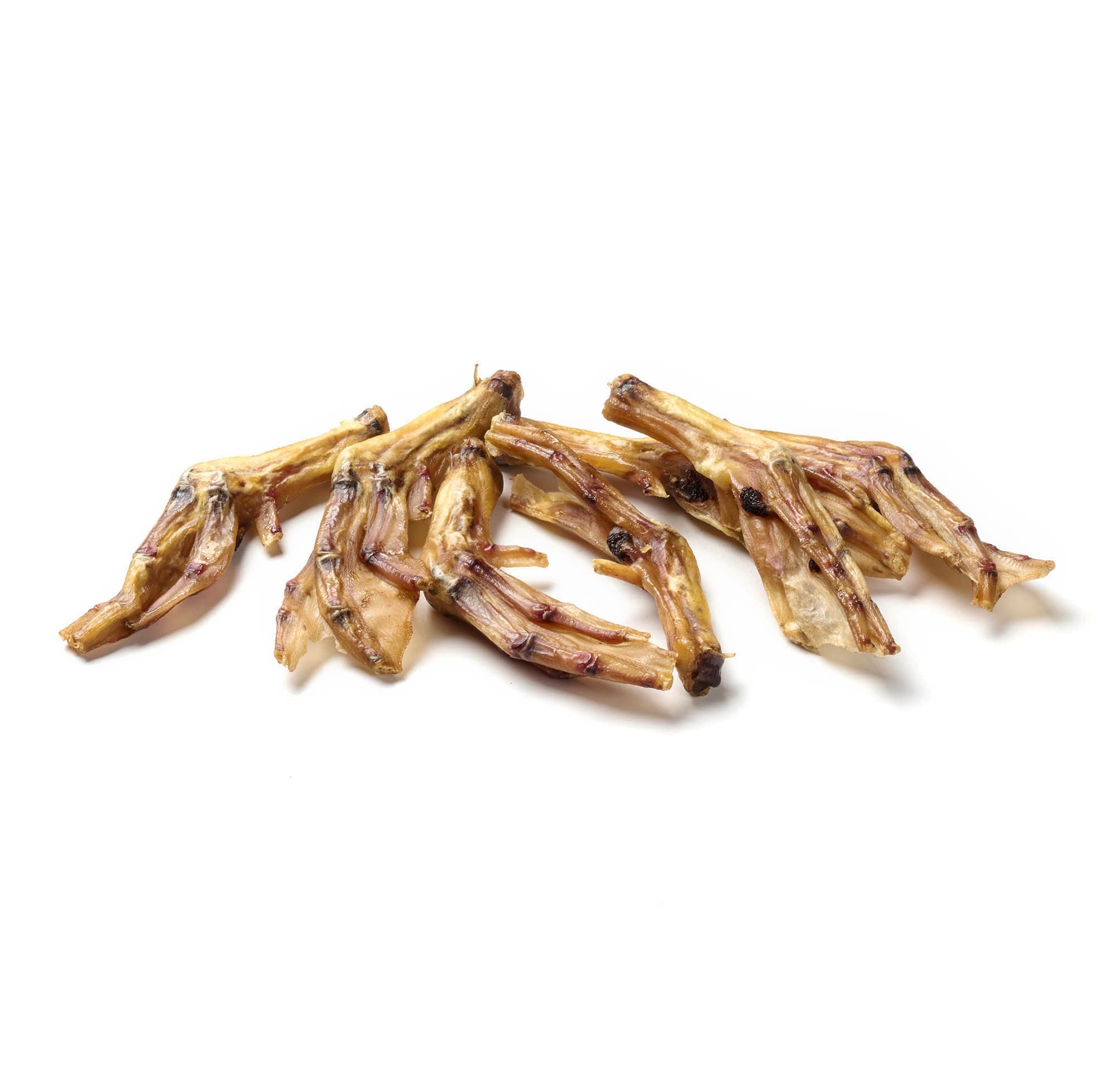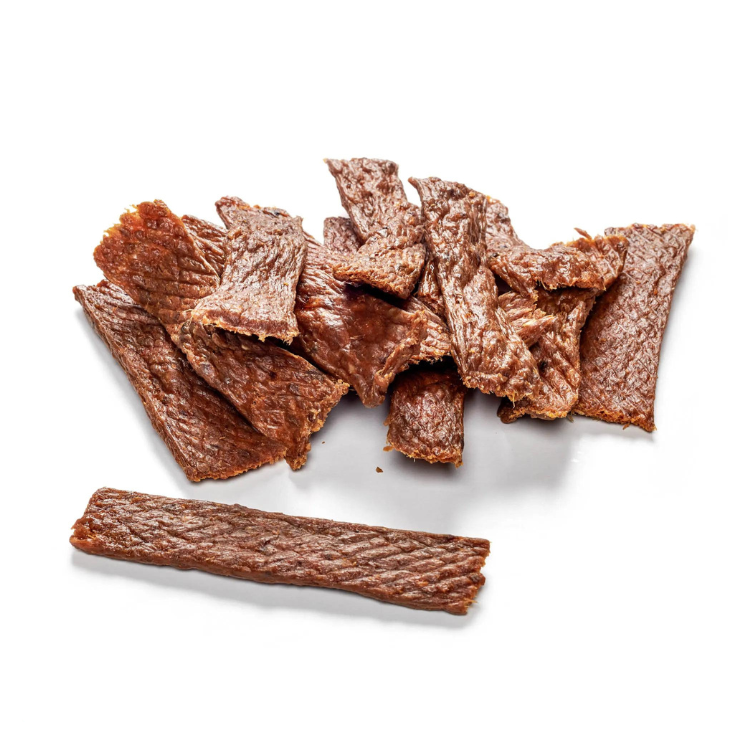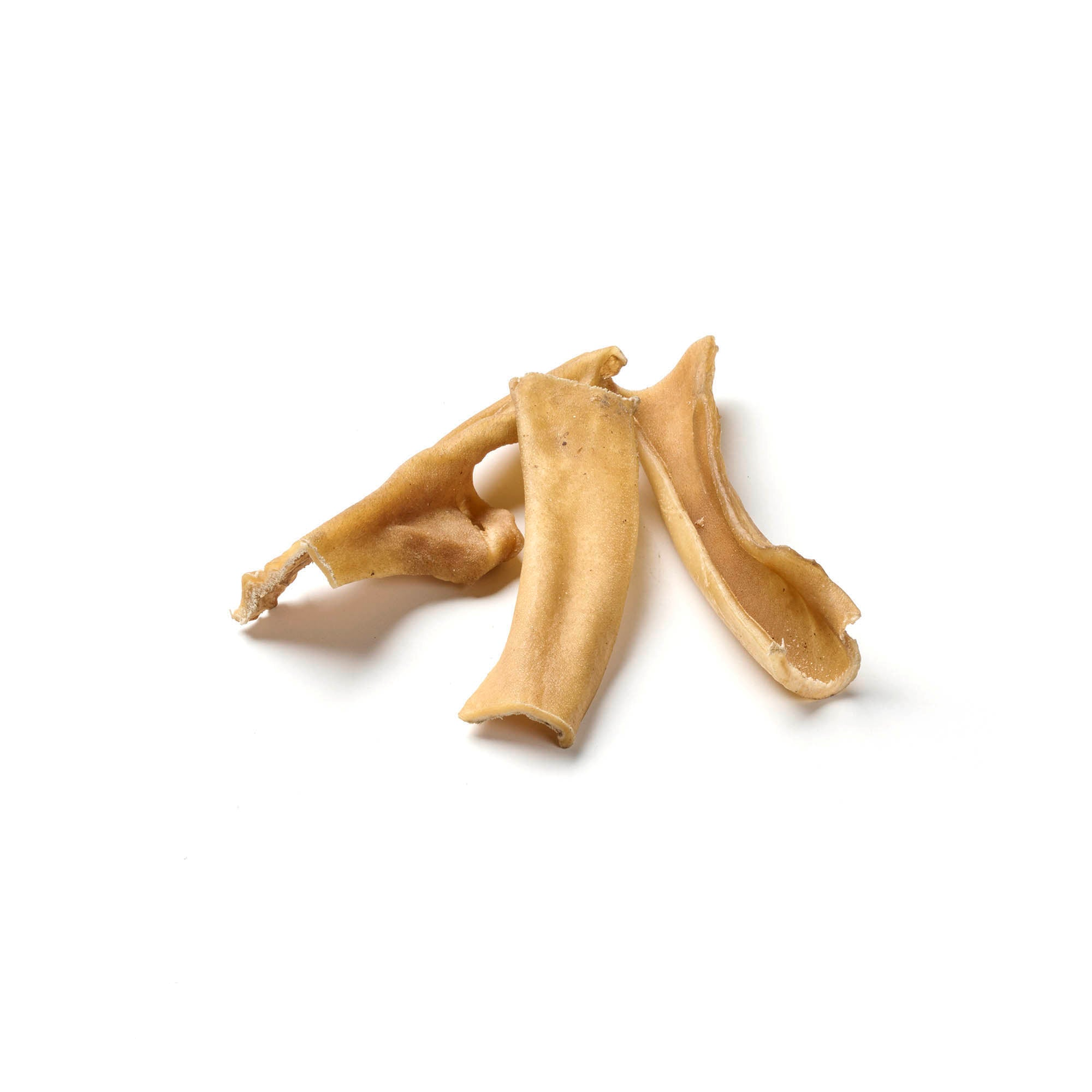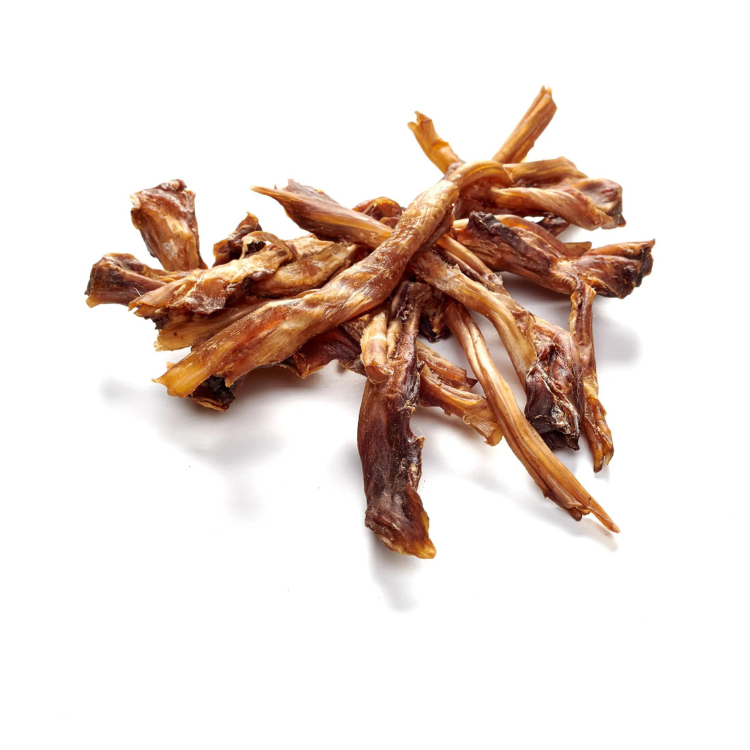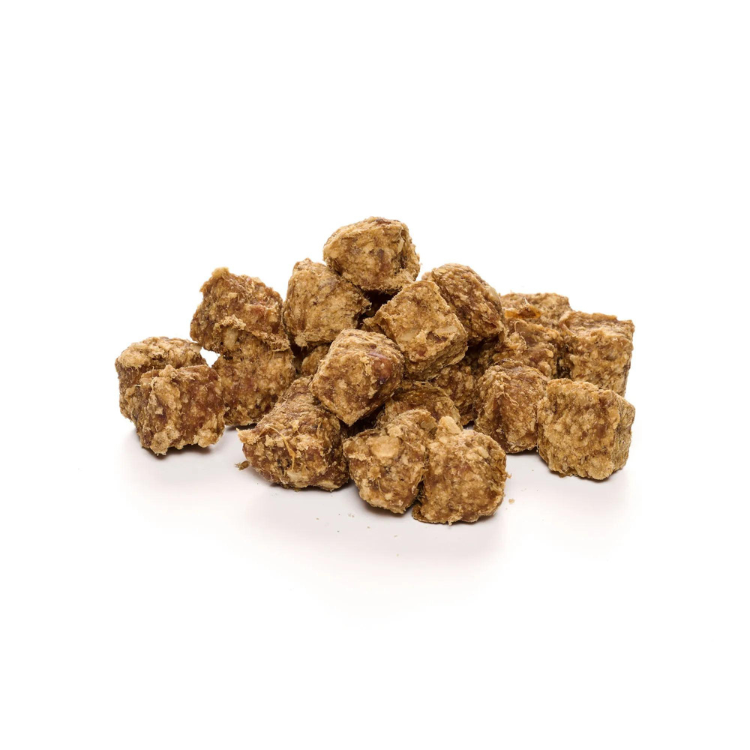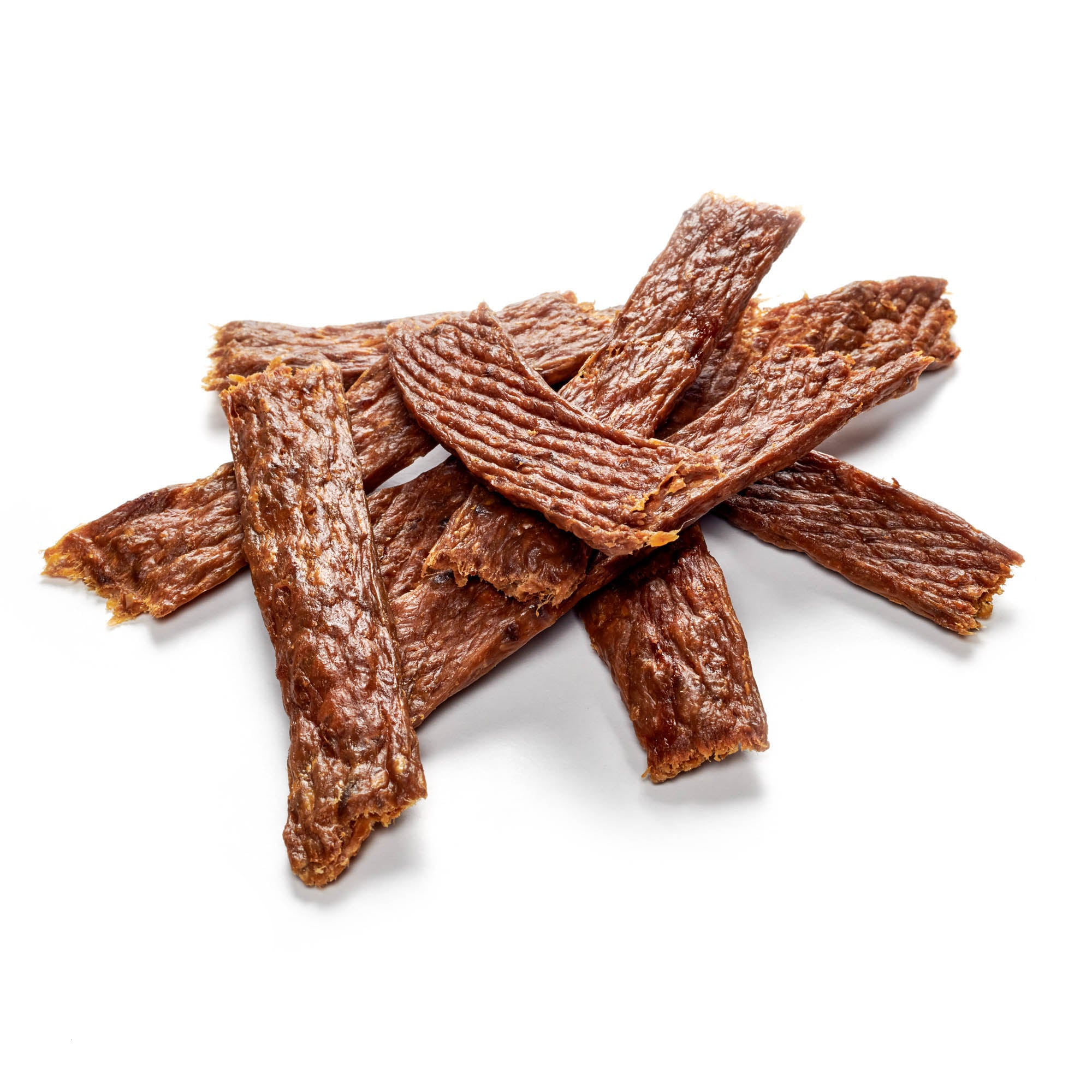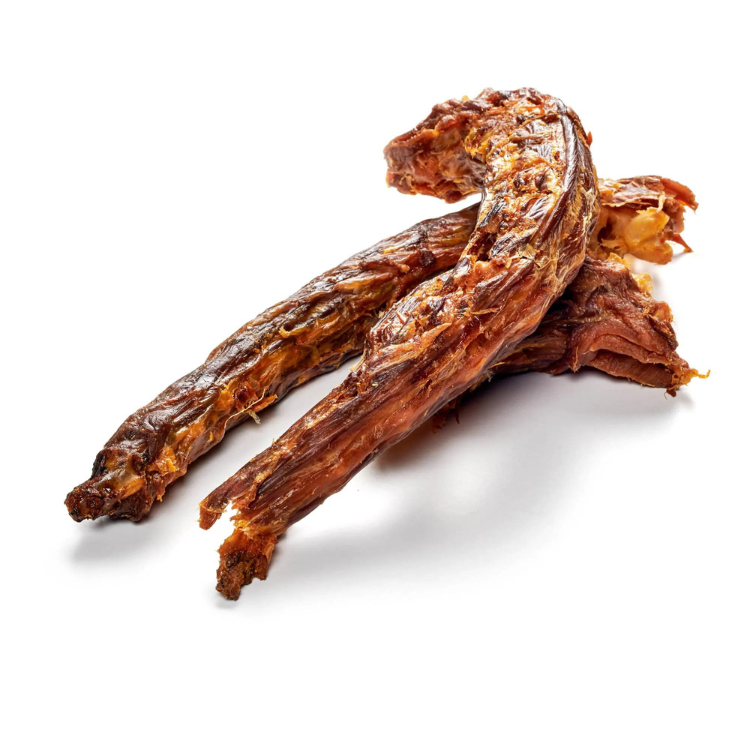
Dog sports - what dog sports are there?
Share
Sport is trendy in all its facets. There is hardly a sport that is not enjoying increasing popularity. And the same is true for dog sports . Not only is it healthy, it also helps to train and socialize your favorite four-legged friend. But just like with us humans, there is now a wide range of sports for dogs too.
Not all dogs are suited to every sport, but there is a suitable sport for every dog. To help you find the right one for you and your dog, you will find an overview of all common dog sports below.
Contents: Dog sports – what types of sports are there?
- Companion dog sport
- Agility
- Coursing
- Degility
- Dog Dancing
- Dog Diving
- Dog Frisbee
- Dummy Training
- Tracking
- Flyball
- Performance herding
- Mobility
- Obedience
- Rally Obedience
- Dog sledding
- Working dog sport
- Dog biathlon
- Rescue dog sport
- Mondioring
Discover delicious dog snacks directly from our range!
Companion dog sport
Companion dog sport is a good way to teach a dog all the common basic commands and basic obedience. It is suitable for all dogs and perhaps even recommended. The aim is for the dog to listen to your every word and your body language without treats or toys and to be able to walk well on a leash. Positive reinforcement is the magic word and is the focus of training so that stressful everyday situations can be mastered calmly and without distraction. After training, dogs aged 15 months and over take the companion dog test. This is not only a great recognition of the performance achieved, but also a basic requirement for many dog sport events such as obedience or agility.
Agility
This dog sport is for particularly agile four-legged friends. Inspired by equestrian sports and invented in Great Britain, this dog sport involves a course that the dogs must complete. In this course they must overcome various obstacles. These can be tunnels, slalom poles, see-saws, catwalks, hurdles or tires. The owner may only help by using signals or commands. All aids such as leashes, clickers or treats are prohibited. The decisive factors are the time achieved and the absence of mistakes. Since this competition is held in different "weight classes", almost all dogs can take part. Only very large and heavy dogs are not suitable for this sport, as it is not particularly healthy for their joints.
Coursing
Anyone who has a greyhound can hardly avoid coursing. These are the well-known dog races in which greyhounds chase an artificial hare dummy. These are not just leisure or hobby events, but sometimes also professional dog races on which money is bet. For the dogs, this is great fun, as long as it stays within healthy limits, because there is hardly anywhere else where these incredibly fast animals can live out their speed and need for movement as well as on a race track.
Degility
Similar to agility, degility also involves completing an obstacle course. The key difference, however, is the lack of a competitive spirit. It is not about achieving the best time without making any mistakes and coming first, but rather about having fun and the training itself. Concentration and movement exercises are the main focus and can be individually adapted to the animal and the person. Degility is therefore also suitable for older dogs or dogs with disabilities.
Dog Dancing
Anyone who loves the stage and has an agile dog might enjoy dog dancing. It's not just the four-legged friend who is the focus. Human and animal perform a kind of dance together that is a bit reminiscent of dressage riding. There are no creative limits to the choreography that is rehearsed together. However, it is important to be a well-rehearsed couple, because even the smallest commands have to be right. This results in elaborate performances that can last for minutes in front of a large audience. A jury evaluates the performances. Any dog and any person who is fit and agile enough can do dog dancing.
Dog Diving
There are two basic requirements for this dog sport . Neither the human nor the dog should be afraid of water and they must be able to swim at the same time. Dog diving is a type of long jump in water , although there are different versions. The aim is to motivate the dog to jump into the water using a toy. The further it manages to do this, the better the score. Three weight classes ensure equal chances of winning. But of course this dog sport can also be great fun without the competitive competition.
Delicious chews for your faithful companion now available!
Dog Frisbee
Dog Frisbee only has a limited connection to playing Frisbee as we humans do. Of course, there are one or more Frisbees here, but it is also a kind of dance choreography like dog dancing. Daring jumps and lots of somersaults are just as much a part of the repertoire as retrieving the Frisbee. The Mini and Long Distance versions are more like classic Frisbee, because the focus here is on the distance achieved, but also on the most artistic way possible for the dog to catch the Frisbee.
Unfortunately, Dog Frisbee is not suitable for large and heavy dogs, as it requires agility and the four-legged friends jump a lot. A high weight can be harmful to the joints - and also to humans.
Dummy Training
Dummy training is perfect for all retrievers , because that's exactly what it's about. With the help of the so-called dummy, a hunting prey is simulated and the dog has the task of bringing it back to its owner. A perfect exercise to playfully satisfy the hunting instinct of dogs and to promote their intelligence. In this dog sport, the focus is less on competition and more on having fun.
Tracking
Tracking comes from the hunting, search and rescue sector and this actually professional task has also become a popular dog sport . In tracking, a distinction is made between mechanical and mantrailing. Mechanical tracks are, for example, footprints or bent plants. Dogs must be able to follow these tracks just as successfully as they can the scent of a person alone. The so-called man-tracking. A good nose is known to be an advantage and so tracking is a great pleasure for almost all dogs, at least as a hobby. However, not all dogs are really well suited to this professionally.
Flyball
Flyball is not a completely new phenomenon; this team sport for dogs and humans has been around since the 1990s. Two teams compete against each other, with each team consisting of two human-dog pairs. The competition takes place on two parallel tracks on which obstacles have been set up, like in a hurdle race. The dogs have to jump over these and collect a ball at the end, which they then use to get back over the hurdles to their owner as quickly as possible. It's a mixture of hurdle racing and relay racing; as soon as the first dog has finished, the next dog on the team begins. It's a dog sport that almost all dogs can do, as the hurdles are usually adapted to the smallest four-legged friends.
Performance herding
Herding dogs do challenging work and in competitive herding this work becomes a competition. Competitive herding is therefore primarily something for (unemployed) herding dogs. The challenge for the handler and dog is herding a strange flock of sheep. There are various tasks to be solved that correspond to the herding business, such as letting the sheep out and putting them in, driving them in different situations such as narrow places or in traffic. In addition to basic things such as the diligence, obedience and independence of the four-legged friend, all completed tasks are evaluated by a jury.
Mobility
What sounds like a lot of action is actually a watered down version of agility. It's more like degility. Although you do a parkour here too, there is no time limit and no competition. It's not about winning, at least not in the true sense of the word. The aim is to gain mobility and so this dog sport is more like dog physio for all dogs that are no longer so good on their feet. Old dogs and dogs with disabilities are in good hands here because the exercises promote movement and health.
Obedience
In German, obedience means obedience and that is the core of this dog sport . It is about following all commands perfectly. When it comes to evaluation, every second counts as to whether commands are rated very good or just good. Alongside the fairly simple basic commands such as “heel”, “sit” or “down”, the disciplines that are evaluated by a jury also include retrieving, mantrailing, lying down and positive social behavior. With intensive training, a very trusting relationship develops between the human and the dog. But it also requires a lot of discipline and perseverance from everyone involved. In principle, any dog can do this sport, but animals with a good sense of smell, who enjoy retrieving and lots of energy have a clear advantage.
Discover delicious dog snacks directly from our range!
Rally Obedience
As with obedience, this is also about the dog's obedience. The term rally in the name stands for the parkour that dog and human complete together. Rally Obedience is essentially a mixture of agility in a calm form and obedience. The result is a much slower competition. The parkour consists less of obstacles than of tasks in which the human and dog have to carry out the tricks and commands described on the respective signs. The challenge lies in mastering the tricks and a time limit. While in most dog competitions, assistance such as treats and praise is not allowed, in Rally Obedience it is actually appreciated. This makes this dog sport a particularly beginner-friendly choice.
Dog sledding
Of course, this dog sport originates from the well-known sled dogs. But because there is not snow and ice all year round in most places, the term dog sledding is an umbrella term for all disciplines in which dogs pull their owners. This sport works with a sled like the one in the snow, a carriage, bicycle or skis, and even without a vehicle. In this case it is called canicross or dog trekking. The dog simply pulls the owner directly on the leash, which is not held in the hand but around the waist. But no matter how the dog pulls its owner forward, it needs a lot of strength and stamina. The competition is based on the distance covered and the time it takes to reach the finish. It goes without saying that the huskies, Alaskan Malamutes and Greenland dogs , known as sled dogs, are particularly suitable here.
Working dog sport
This sport is the basis for the working dog test. It is aimed primarily at service dogs and their owners who work in corresponding areas. It is therefore a dog sport with high demands and a level of difficulty. In addition to tracking, agility exercises and unconditional obedience, the program also includes retrieving with obstacles, basic resilience, concentration and protection tasks. Not only should the dog be well trained, but the owner must also have a certain level of competence. Not all dog breeds are suitable for this dog sport. Similar to the tasks of search and rescue dogs, German Shepherds , Airedale Terriers or Malinois are preferred here.
Dog biathlon
This dog sport is aimed specifically at dog handlers with their service dogs, but there are also civilian versions of it. Here, anyone can compete with their four-legged friend in an obstacle course that is six to eleven kilometers long. Various obstacles and disciplines must be completed. The person and animal not only have to run, jump and climb, but also swim and cycle together. The version for protection services also includes simulated fights and loud gunshots. The dog and its companion must complete the course in a set time. Mistakes can be punished with a time penalty.
Rescue dog sport
Like all service dogs, rescue dogs undergo demanding training. And this has also given rise to a dog sport that simulates the everyday work of rescue dogs. Dogs need a keen nose and high concentration skills, because even if real human lives are never at stake, the tasks involved in searching rubble, avalanches or areas and rescuing people from bodies of water are extremely challenging. Agility and obedience are also trained and assessed.
Mondioring
Another service dog sport that ends in a test that even follows international standards. The focus is on obstacle courses with long jumps, steep walls and especially on the function as a guard dog. For this, attacks are simulated and the dogs must not only be able to defend their handler but also objects under certain circumstances. They must also be able to retrieve and refuse food despite distractions. Challenging tasks for dogs who are advanced in training, especially since all tasks must be carried out without a leash and on command and the jury has to follow strict rules. General behavior such as discipline, concentration and strength of nerves are also assessed.
Conclusion
No matter what kind of dog you have or how fit you both are, there is a dog sport for you. It doesn't always have to be competitive, but can also be fun without any pressure to perform. But if you're looking for a challenge, you can take part in all kinds of very professional competitions and turn yourself and your four-legged friend into competitive athletes.
Spoil your dog with high-quality chewing products from our range!

